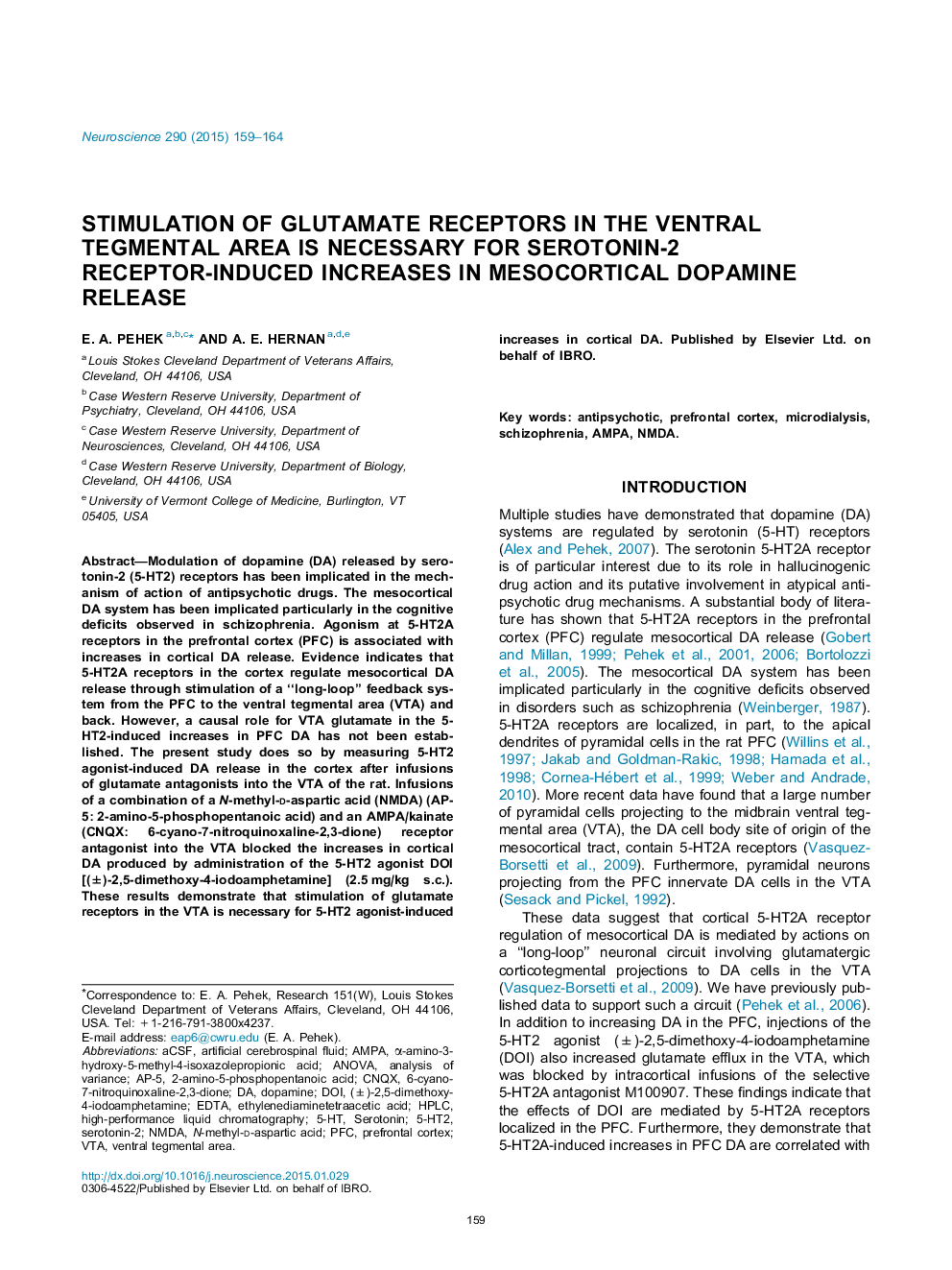| Article ID | Journal | Published Year | Pages | File Type |
|---|---|---|---|---|
| 6272629 | Neuroscience | 2015 | 6 Pages |
Abstract
Modulation of dopamine (DA) released by serotonin-2 (5-HT2) receptors has been implicated in the mechanism of action of antipsychotic drugs. The mesocortical DA system has been implicated particularly in the cognitive deficits observed in schizophrenia. Agonism at 5-HT2A receptors in the prefrontal cortex (PFC) is associated with increases in cortical DA release. Evidence indicates that 5-HT2A receptors in the cortex regulate mesocortical DA release through stimulation of a “long-loop” feedback system from the PFC to the ventral tegmental area (VTA) and back. However, a causal role for VTA glutamate in the 5-HT2-induced increases in PFC DA has not been established. The present study does so by measuring 5-HT2 agonist-induced DA release in the cortex after infusions of glutamate antagonists into the VTA of the rat. Infusions of a combination of a N-methyl-d-aspartic acid (NMDA) (AP-5: 2-amino-5-phosphopentanoic acid) and an AMPA/kainate (CNQX: 6-cyano-7-nitroquinoxaline-2,3-dione) receptor antagonist into the VTA blocked the increases in cortical DA produced by administration of the 5-HT2 agonist DOI [(±)-2,5-dimethoxy-4-iodoamphetamine] (2.5 mg/kg s.c.). These results demonstrate that stimulation of glutamate receptors in the VTA is necessary for 5-HT2 agonist-induced increases in cortical DA.
Keywords
5-HT25-HT(±)-2,5-dimethoxy-4-iodoamphetamineAP-5DOIaCSFAMPA6-Cyano-7-nitroquinoxaline-2,3-dioneEDTAEthylenediaminetetraacetic acidα-amino-3-hydroxy-5-methyl-4-isoxazolepropionic acidanalysis of varianceANOVADopamineSerotoninCNQXartificial cerebrospinal fluidhigh-performance liquid chromatographyHPLC
Related Topics
Life Sciences
Neuroscience
Neuroscience (General)
Authors
E.A. Pehek, A.E. Hernan,
